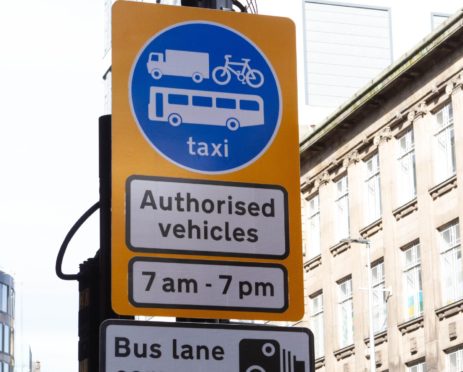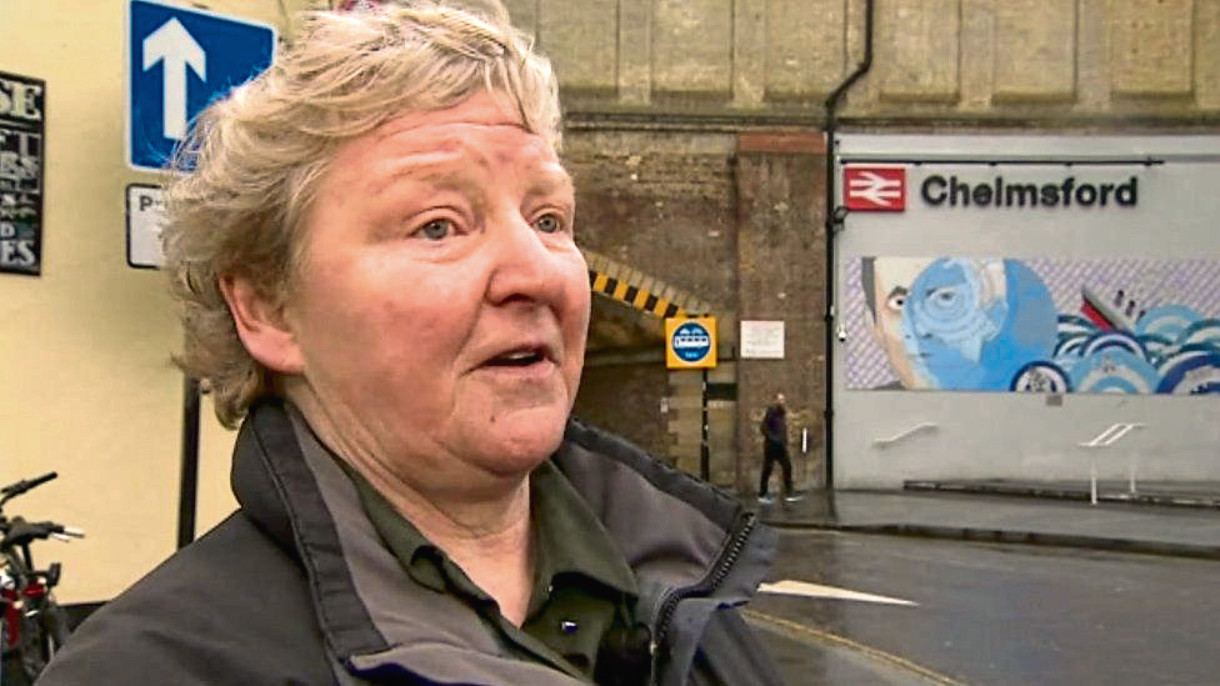
A psychologist has claimed bus lanes are dangerous as their signage contains too much information for the brain to process safely while driving.
Bernardine King, who specialises in understanding thought processes, said Scotland should now follow the lead of England and Wales, who are set to issue warnings, rather than fines, to first offenders.
Critics claim bus lanes and gates are used by local authorities to generate cash from motorists. Even with lockdown, fines worth about £9 million were issued in Scotland last year.
Dr King, who successfully fought a fine on the grounds of inadequate signage, said: “Bus lane and bus gate signs do not give you instructions, they give you information. A simple instructional sign, such as no entry, would solve the problem. Yet councils do not fit these and you have to ask, why?
“You simply cannot read and process the signs quickly enough while driving safely. It’s a subtle trick. They say there is plenty of signage and they are quite right. There’s actually too much.
“Driving and reading are two of the most complex skills most people will develop in their lives. Being asked to do them simultaneously, while also making decisions about routes, is a heavy cognitive load.”
Dr King was fined in December 2018 and went to a tribunal the following February where she won her case, arguing the signage, in Chelmsford, Essex, was unclear. She spoke out after we revealed last month that bus lane first offenders in Scotland would continue to be fined while those in England and Wales were to be given a warning letter.
She said: “It suggests to me Scottish councils are more interested in profit than road safety. It’s extraordinary that they should use this surreptitious way to raise money.
“You feel a sense of mild panic when you see a bus lane sign and you have cognitive conflict going on, with all the signage providing various pieces of information. It’s distracting and unsafe. First offenders should be given a warning letter and they’ll likely stay clear in future.”
Scottish Conservative Shadow Transport Secretary Graham Simpson said: “It makes sense to give drivers an initial warning rather than a fine. Refusing to implement this in Scotland will fuel the suspicion bus lanes are little more than a stealth tax.”
We told how enforcement of a new bus gate in Glasgow city centre 18 months ago was delayed as the council fitted new signage after the initial layout sparked chaos. We witnessed drivers slowing or stopping in confusion, trying to work out an alternative route, before the traffic flow in the busy one-way system forced them through the bus gate. The camera, at Union Street, went on to issue more than 32,000 of the £60 fines last year.
The AA said: “For drivers unfamiliar with such routes, the signage isn’t doing the job. In the absence of clear directions, or more discretion in issuing tickets, there should be a first-time warning letter in Scotland, as is likely to become standard elsewhere in the UK.”
The Department for Transport said: “Traffic signs in Scotland, as in England and Wales, must conform to the Traffic Signs Regulations legislation. Enforcement is a devolved matter.”
Transport Scotland added implementation “rests with relevant local authorities”.
Glasgow City Council said: “All of our signage for bus gates and lanes is fully compliant with roads legislation and in many cases goes far beyond what is required by the law.”
Edinburgh City Council said: “The display of information on our bus lane and gate signs is in compliance with national guidance.”
Aberdeen City Council said: “The signage for our bus gates are designed in accordance with the law and are based on the speed of a specific road in relation to the sign, symbols and lettering.”

Enjoy the convenience of having The Sunday Post delivered as a digital ePaper straight to your smartphone, tablet or computer.
Subscribe for only £5.49 a month and enjoy all the benefits of the printed paper as a digital replica.
Subscribe © SYSTEM
© SYSTEM